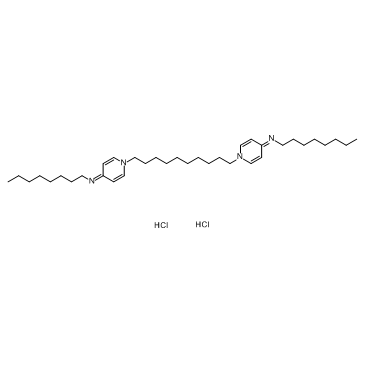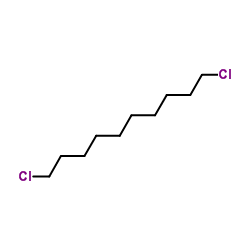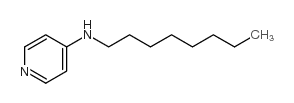Octenidine dihydrochloride
Modify Date: 2024-01-02 18:19:39

Octenidine dihydrochloride structure
|
Common Name | Octenidine dihydrochloride | ||
|---|---|---|---|---|
| CAS Number | 70775-75-6 | Molecular Weight | 623.826 | |
| Density | N/A | Boiling Point | 609.3ºC at 760 mmHg | |
| Molecular Formula | C36H64Cl2N4 | Melting Point | 215-217ºC | |
| MSDS | N/A | Flash Point | 322.3ºC | |
Use of Octenidine dihydrochlorideOctenidine dihydrochloride is an effective antiseptic compound for skin mucous membranes and wounds. |
| Name | Octenidine Dihydrochloride |
|---|---|
| Synonym | More Synonyms |
| Description | Octenidine dihydrochloride is an effective antiseptic compound for skin mucous membranes and wounds. |
|---|---|
| Related Catalog | |
| In Vitro | Octenidine concentrations of less than1.5 μM (0.94 μg/mL) causes a greater than 99% reduction of tested microbial population within 15 min. Staphylococcus epidermidis is the most susceptible of the test organisms, and E. coli and C. albicans are the least susceptible[1]. |
| In Vivo | The antimicrobial activity of octenidine hydrochloride (OCT) is maintained when applied to the skin of the hands and feet of cynomolgus monkeys. Aqueous octenidine, at a concentration of 0.2 to 1.6% reduces resident microflora populations from 90 to 99.98%[1]. A significant reduction in plaque score is observed on the buccal tooth surfaces after daily topical application of 1% solutions of octenidine and chlorhexidine for 7 d; octenidine is more effective than chlorhexidine[2]. |
| Kinase Assay | The bactericidal activities of OCT and CHG against Staphylococcus aureus are measured by exposing cultures to several different concentrations of each compound for various lengths of time. OCT is diluted from the 5 mM stock solution and tested in phosphate buffer at levels ranging from 0.5 to 5.0 FsM. The test is begun by adding the bacterial culture to the test solution containing OCT or CHG; samples are taken at 5, 15, 30, and 60 min afterward. The inoculum size is approximately 106 CFU/mL[1]. |
| Animal Admin | Monkeys: Four solutions of OCT are prepared by dissolving OCT in distilled water to final concentrations (wt/wt) of 0.2, 0.4, 0.8 and 1.6%, equivalent to 3.2, 6.4, 12.8 and 25.6 mM, respectively. Skin-degerming activities of aqueous and formulated octenidine and formulated chlorhexidine are compared in single and multiple applications of these agents to the hand and foot surfaces of monkeys by using a glove-juice extraction procedure to measure the skin microflora[1]. |
| References |
| Boiling Point | 609.3ºC at 760 mmHg |
|---|---|
| Melting Point | 215-217ºC |
| Molecular Formula | C36H64Cl2N4 |
| Molecular Weight | 623.826 |
| Flash Point | 322.3ºC |
| Exact Mass | 622.450806 |
| PSA | 31.82000 |
| LogP | 3.78140 |
| Water Solubility | Soluble in dimethyl sulfoxide and methanol. |
|
~% 
Octenidine dihy... CAS#:70775-75-6 |
| Literature: US2001/16660 A1, ; |
| 1,1'-Decane-1,10-diylbis[4-(octylamino)pyridinium] dichloride |
| 1-Octanamine, N,N'-(1,10-decanediyldi-1-pyridinyl-4-ylidene)bis-, hydrochloride (1:2) |
| 1,1'-(1,10-Decanediyl)bis(N-octyl-4(1H)-pyridinimine) dihydrochloride |
| N,N'-(decane-1,10-diyldi-1(4H)-pyridyl-4-ylidene)bis(octylammonium) dichloride |
| N,N'-(Decane-1,10-diyldipyridin-1-yl-4-ylidene)dioctan-1-amine dihydrochloride |
| Win 41464-2 |
| N,N'-(decane-1,10-diyldipyridin-1-yl-4-ylidene)dioctan-1-aminium dichloride |
| pyridinium, 1,1'-(1,10-decanediyl)bis[4-(octylamino)-, chloride (1:2) |
| 1,1'-Decamethylenebis(1,4-dihydro-4-(octylimino)pyridine) dihydrochloride |
| Octenidine (dihydrochloride) |

